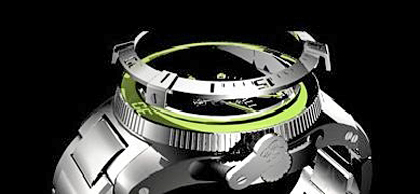The pulling of objects toward Earth by gravity is called G force and it is just a measurement of acceleration. The force of gravity when you sit, stand or lie down is considered 1 G. In normal activity, we rarely experience anything other than 1 G. As you pull more Gs, your weight increases correspondingly. A 10-pound human head will weigh 90 pounds when he pulls 9 Gs.

Shock resistance refers to the Gs experienced in the blink of an eye. The transition between motion to a complete stop in an instant creates immense stresses. This could be disastrous for the internal components of a wristwatch. Built with the highest quality standards in mind, every Ball Watch undergoes rigorous testing procedures to verify its impeccable shock resistance up to 5,000Gs. According to the International Standard (ISO 1413), the shock resistance test is conducted using a pendulum impact-testing machine. The mechanism sets off a circular movement that brings the pendulum to hit the watch from 1 meter. The first shock is directed against the case, parallel to the plane of the watch, on the 9 o'clock side. The second shock is directed against the glass, perpendicular to the plane of the watch.
At Ball Watch Company, we go beyond the above standard by testing the Engineer Hydrocarbon collection with a tougher 1.5 meter hammer strike, raising the resistance to 7,500Gs. We also add a third shock test directed against the relatively weaker 3 o'clock crown position of the watch to test our patented crown protection system and ensure it functions properly. The Engineer Hydrocarbon must pass this 7,500Gs shock resistance test without any damage. Finally, the sapphire crystal used in the Engineer Hydrocarbon collection is specially made 4mm thick for better protection.




